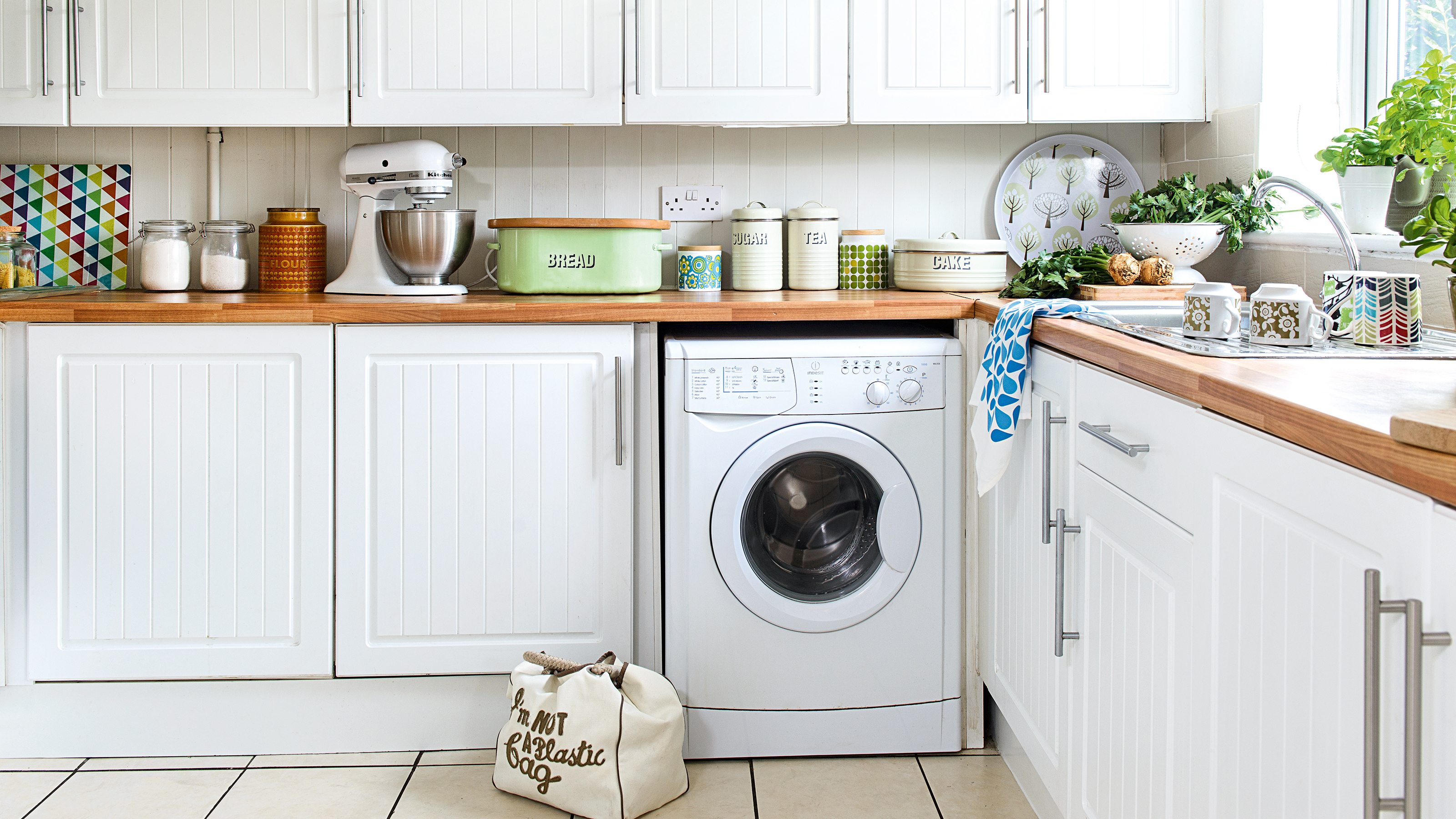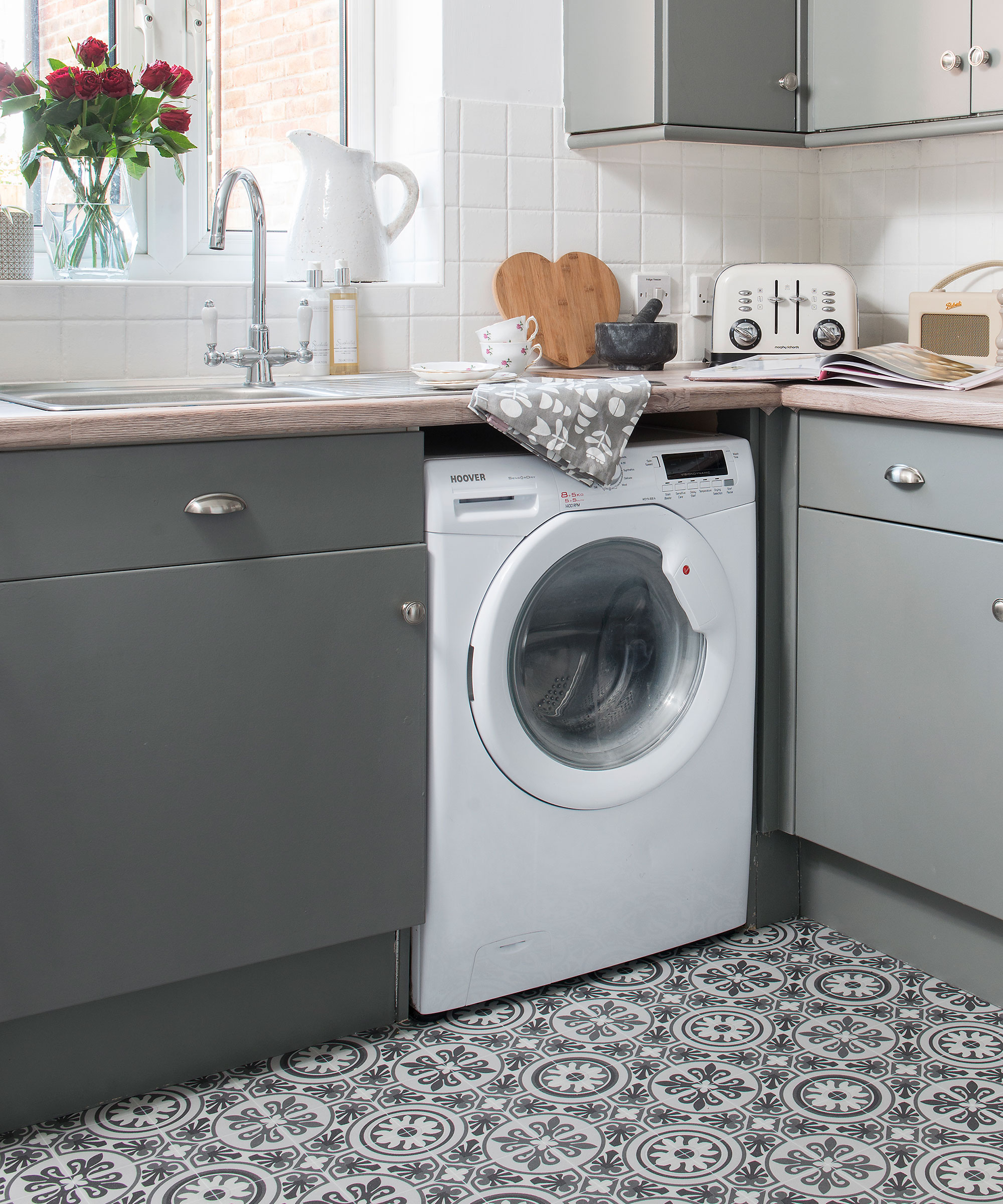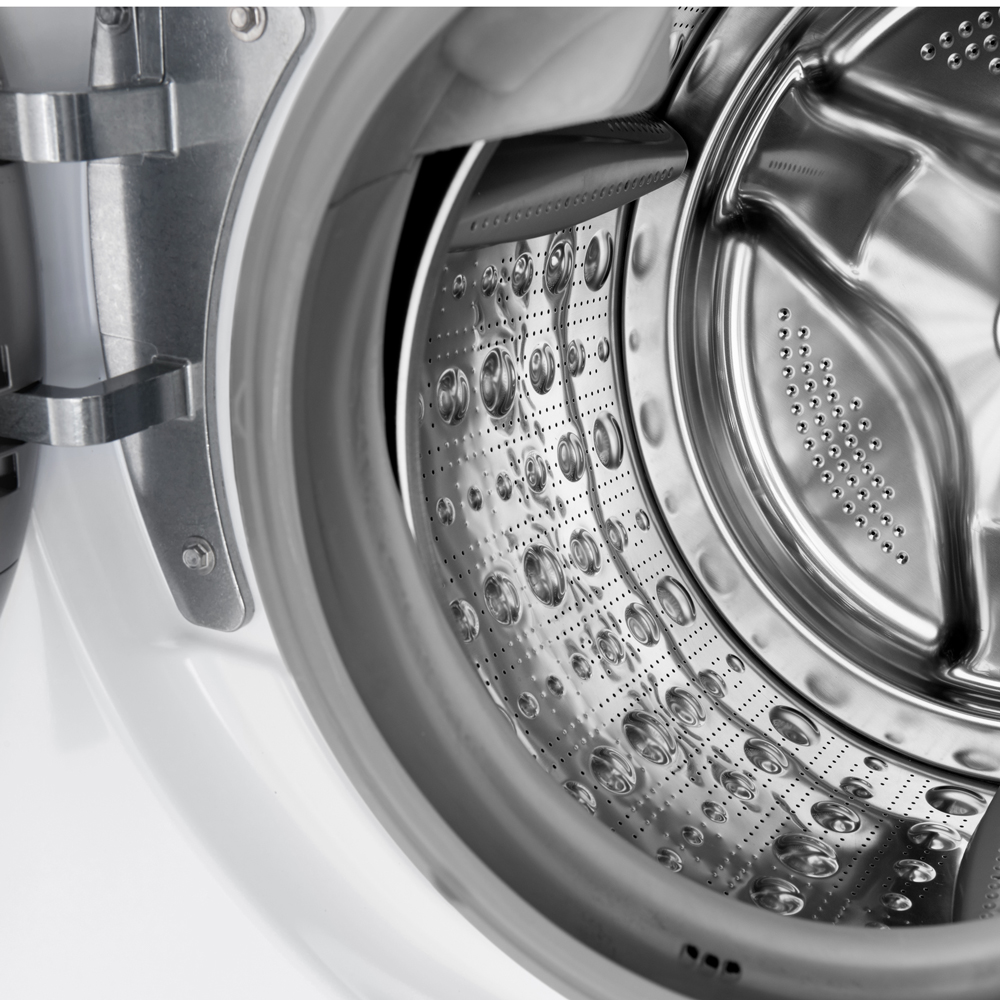How to clean a washing machine - a guide to cleaning the drum, seal and filter and banish bad odours
Clean laundry starts with a clean machine

It’s easy to assume that the things that clean for us - like washing machines - are also clean by default. But the reality is that washing machines are a breeding ground for germs, mould, and nasty odours, which is why everyone should know how to clean a washing machine.
Yes, if you’ve noticed that your washing machine has started to smell or it’s costing more to run, there’s a high chance that your washing machine needs some serious TLC. In fact, experts suggest deep-cleaning your washing machine every 1-3 months to keep bad odours at bay and keep your machine in full working order for years to come.
And while there are certain things you should never do when cleaning a washing machine (like removing the paddles, for example), there are also many things that you should always do. To ensure you don’t forget, we’ve put together the ultimate step-by-step guide on how to clean a washing machine below.

What you'll need
- White vinegar - like this Miniml White Vinegar from Lakeland.
- Baking soda - like this Duzzit Amazing Baking Soda from Amazon.
- Microfibre cloths - like these Sorbo Pack of 4 Microfibre Cloths from Dunelm.
- Toothbrush or brush - like this SonicScrubber Cleaning Tool with 4 brushes from Lakeland.
- Antibacterial spray - like this Dettol Antibacterial Surface Cleaning Spray from Amazon.
- Bowl - like this ADDIS Eco Signature Washing Up Bowl from John Lewis.
Step-by-step

1. Read the manufacturer's guidelines
One thing many people don’t realise when looking to clean their washing machine is that not all washing machines are created equally. Each brand and each model has their own quirks, and this can impact how you clean it.
So, before you dive into the cleaning process, you should familiarise yourself with the manufacturer's guidelines.
'You’ll easily be able to find these in your washing machine's user guide or manual,' says Olivia Young, product development scientist at Astonish.
'Different machines are likely to have specific cleaning recommendations based on the make and model. So make sure you have given these a good read to avoid any damage and ensure you maintain your appliance safely and correctly.'
Sign up to our newsletter for style inspiration, real homes, project and garden advice and shopping know-how
When you’re confident you know what your washing machine wants and needs, you can move on to the next step.
2. Clean the detergent drawer
Although you put cleaning products into it, it’s uncommon to find scum and mould in the detergent drawer of your washing machine. Regularly cleaning it can help, though.
'Turn off your washing machine before doing anything,' says Lucy Rhead at Gtech. 'Then, grab an old toothbrush and ordinary antibacterial spray to scrub away any build-up you can see – both inside the drawer and the drawer cavity, too.'
Feeling lazy but in no real rush? James Hwang at Studio has an even simpler solution. 'Remove the drawer entirely and leave it to soak in warm water for a few hours,' he advises, adding that you can scrub away any stubborn residue once this is done.
You can even soak it in a mixture of water and white vinegar for a much deeper clean. Just remember to let the drawers dry completely before reinserting them into the machine.

3. Clear out the filter
The debris filter is an essential component of your washing machine. It’s there to protect your washing machine's pump by stopping lint, stray tissues, coins and general dirt in its tracks – making it a one-stop destination for germs.
It is also warm and humid, making it an ideal breeding ground for dodgy smells that will infiltrate the machine... and your laundry. So, cleaning the washing machine filter is key.
'Clear out the filter by removing the emergency drain tube and catch any trapped water with a bowl,' says Lucy. 'Carefully release the filter cover, and anything that is trapped should drain out with the water.'
It's important to note that clearing out the filter differs by manufacturer, so you should always check your washing machine manual first before tackling this one.
'Once you’ve checked over your manual and released the water, you can clean the filter with a damp, but not sodden, cloth,' says James. Then, you can repeat this cleaning routine every few months to prevent leaks.
4. Rinse the drum

When sussing out how to clean a washing machine, don't forget that seemingly sparkling clean drum: it's another germ hot spot. Thankfully, all you need to do is run the machine empty on a hot wash and grab your bottle of white vinegar.
'Add a cup of white vinegar and put it on a high-temperature cycle,' advises James. 'This will remove any dirt build-up and will leave the drum smelling fresh and clean.'
If there are any stubborn stains in there, you can also make a paste of water and baking soda and use a toothbrush to get into the nooks and crannies. This can also help to tackle any musty smells in the drum. Then, dry the drum with a clean microfibre cloth to finish.
Alternatively, you could clean a washing machine with soda crystals, as this specifically focuses on the drum and removes any limescale if you live in a hard water area.
5. Wipe down the door seal
One component many people forget about when cleaning their washing machine is the rubber seal. This is the space between the door and the drum, and it’s a breeding ground for mould, mildew, and even lost socks.
That’s why it’s so important to clean the rubber seal on a washing machine, as leaving it too long can lead to nasty smells and bacteria build-up. The easiest way to do this is right after a wash.
Lucy advises, 'Wipe down the seal of the door after each wash so your fresh clothes aren’t picking up old detergents and grime when you remove them from the drum.’
If you’re looking for a deeper clean, though, you can follow in the footsteps of Lynsie Crombie, AKA Lynsey Queen of Clean and use baking soda to clean the seal. To do this, you’ll need to sprinkle the baking soda inside the seal and let it work its magic for 10 minutes before running a rinse cycle on your washing machine.
‘The bicarb will soak up the odours and clean up the seal with ease,' assures Lynsey.
6. Leave the door open between washes
Once you’ve emptied your washing and hung it out to dry, you may feel inclined to shut the door of your washing machine to tidy everything up. But this is one of the worst things that you could do. Instead, you should leave it open between washes - especially if you want to prevent mould build-up in a washing machine.
'Mould and mildew grow rapidly in warm and wet environments due to the moisture that builds up – which is exactly what happens if you shut the door!' says Olivia.
To avoid this, she suggests that you 'keep it slightly ajar so that air can circulate inside the machine and dry it out'.
'Try to remove clean clothes right after the end of a cycle,' adds James. 'This will prevent moisture from building up which can cause odours and germs to fester.'

7. If in doubt, run a hot wash
If you don’t have time to do the above steps but want to be sure that your washing machine is clean for your next load of washing, there is something else you can do.
By running an empty hot wash - yes, without anything in it - you can clean your washing machine and actually banish smells in the process. This is typically called a ‘maintenance cycle’, and most experts would suggest running this once a month to keep on top of your washing machine. In fact, some modern washing machines even come with their own ‘self-cleaning’ cycle now.
And while you may wash your clothes on an economical cold wash, the maintenance cycle has to be a hot wash - around 60°C, actually. These high temperatures will kill off any mould, bacteria, and germs that are lingering in your washing machine.
This is echoed by Katy Roberts, a washing machine expert from AO.com. She explains, ‘To keep your washing machine clean, instead once a month run the empty machine on the hottest cycle without detergent in order to get rid of any mould or bacteria.’
However, it’s important to note that this isn’t an alternative to the above steps. Instead, it’s an addition.
FAQs

What is the best homemade way to clean washing machine?
You don’t need to buy fancy chemicals or specific products to clean a washing machine. Popping some white vinegar into the drum and detergent tray and then using baking soda in the seal is the best homemade way to clean a washing machine.
You don’t even have to have these, though. If you’re stuck for cleaning products, simply washing your machine on a ‘hot’ empty wash every month should be enough to kill any bacteria or mould.
Can you clean a washing machine with dishwasher tablets?
Although you may assume that dishwasher tablets will clean your washing machine as well as they clean your dishwasher, you should never use them to clean a washing machine. This product is designed for dishwashers - and using it for another purpose can cause significant damage.
The main reason for this is that dishwashers typically run on a hotter cycle, and dishwasher tablets are designed to work their magic at hotter temperatures than washing machines.
The chemicals in these dishwasher tablets can also damage the components of your washing machine and leave a nasty residue in the drum, which will be hard to clean afterwards. So, avoid using dishwasher tablets at all costs.
So, that's how you clean a washing machine. And once you've got the deep clean worked into your routine, your machine will start working better than ever, and the daily upkeep will be down to a minimum.
Jennifer is the Deputy Editor (Digital) for Homes & Gardens online. Prior to her current position, she completed various short courses a KLC Design School, and wrote across sister brands Ideal Home, LivingEtc, 25 Beautiful Homes, Country Homes & Interiors, and Style at Home.
- Lauren BradburyContent Editor (House Manual)
- Kayleigh DrayActing Content Editor
- Holly WalshContributor